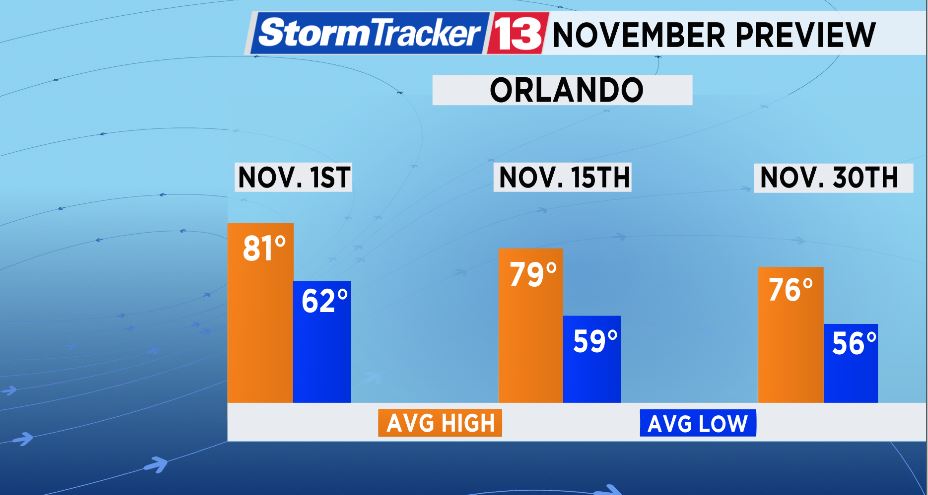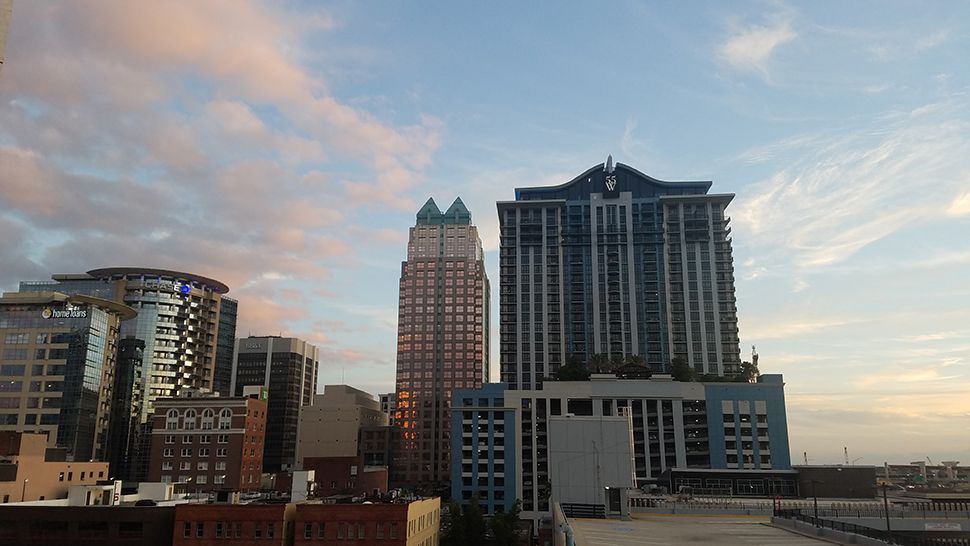ORLANDO, Fla. — November is upon us, and the holiday season is right around the corner. Typically, November is the first full month of dry season for Central Florida, and hurricane season ends on November 30!
- November typically 1st full month of dry season
- SEE BELOW: Average Temperature/Rainfall Breakdown ▼
- READ MORE: Weather Experts Blog
We’ve already had a few cold fronts sweep through Central Florida bringing much cooler and drier air. These fronts will continue to move through from time-to-time.
November is the driest month of the year for Orlando. The average rainfall for the City Beautiful is only 2.17 inches. Meanwhile, it is the third driest for Daytona Beach and the fifth driest month in Melbourne.
Average high temperatures across Central Florida start out in the upper 70s and lower 80s with morning temperatures normally in the upper 50s and lower 60s.
By the end of the month, high temperatures normally fall back to the low to mid-70s with overnight lows dipping into the 50s.

Significant Severe Weather Events in November
While the chance of severe weather during November is low, there have been significant events in the past.
You may remember the 1997 New Smyrna Beach tornado on November 2. The tornado was the strongest to ever hit Volusia County. It touched down after midnight just west of Highway 1, and it then moved across the intracoastal waterway traveling east to the ocean.
It was classified as a F3 tornado on the old Fujita-scale with winds of 158 to 206 mph. Today, it may have been considered an EF 4 on the enhanced Fujita scale. Tornadoes this strong are not only rare for Central Florida but also for the entire state.
During that same year, there was a tornado that touched down near Lake Washington in Melbourne on November 13. The tornado touched down along I-95 in Melbourne and it did some damage. The tornado lifted on the Barrier Island at Satellite Beach.
There was also a tornado event that took place on Election Day in 2006. It was on November 7 when a series of storms moved through Central Florida spawning tornadoes that resulted in damage in portions of Orange and Seminole Counties.
On November 15, 1994, Tropical Storm Gordon produced a tornado on Barefoot Bay and on November 16, 2002 there was a microburst (strong burst of wind racing down to the ground) in Melbourne.
November’s Average Temperature and Rainfall Breakdown
ORLANDO
November 1: November 15: November 30:
High: 81° High: 79° High: 76°
Low: 62° Low: 59° Low: 56°
Average Rainfall: 2.17”
DAYTONA BEACH
November 1: November 15: November 30:
High: 79° High: 76° High: 73°
Low: 61° Low: 57° Low: 54°
Average Rainfall: 2.69”
MELBOURNE
November 1: November 15: November 30:
High: 81° High: 79° High: 76°
Low: 63° Low: 60° Low: 56°
Average Rainfall: 2.88”
SANFORD
November 1: November 15: November 30:
High: 81° High: 78° High: 75°
Low: 62° Low: 58° Low: 55°
Average Rainfall: 2.53”



